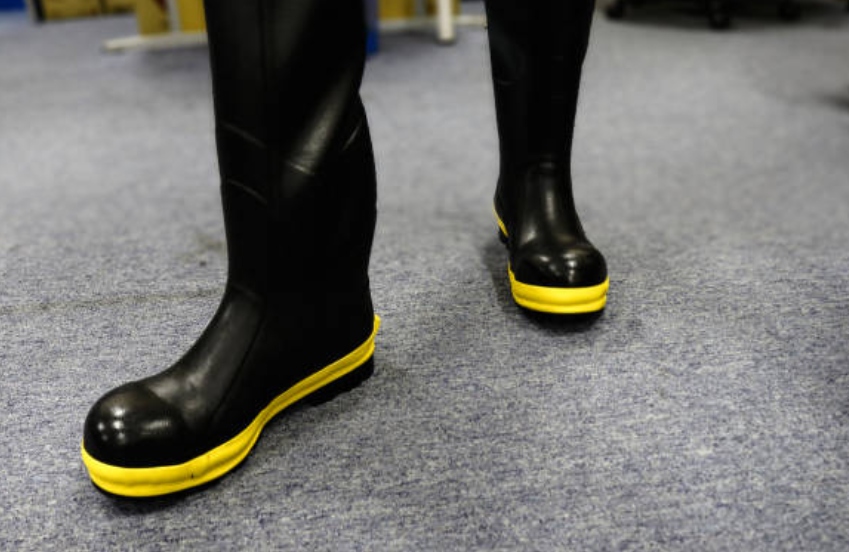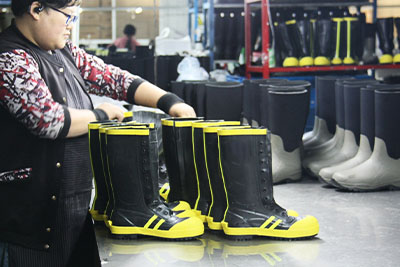Does it help to wear rubber rain boots in a lightning storm
Lightning storms are some of the wildest and most dangerous events in nature. With power that can hit a billion volts and heat hotter than the sun’s surface, lightning is a real danger to anyone stuck outside during a storm. Many stories and guesses float around about staying safe, and one common question pops up: can rubber rain boots shield you from lightning? This piece digs into the facts about rubber boots, how they handle electricity, and whether they’re any good in a lightning storm.

What are Rubber Rain Boots?
Rubber rain boots are waterproof shoes made from natural or man-made rubber. They’re built to keep your feet dry when it’s rainy or muddy. These boots usually have a tough outer layer that pushes away water, dirt, and other stuff. They often come up to your calf or knee and have thick bottoms for better grip on wet ground. While they’re great for rainy days, gardening, or sloppy areas, they’re not meant to guard against strong electrical dangers.
Even though they’re not made for electrical safety in big power situations, rubber does have a natural ability to block small amounts of electricity.
Electrical Properties of Rubber
Insulating Characteristics of Rubber
Rubber is well-known for stopping electricity. It blocks the flow of current, keeping electrons from moving through it easily. That’s why it’s used in things like gloves for electric workers or mats to stand on. The way rubber is built makes it hard for electricity to pass through under normal settings.
How Rubber Behaves Under High Voltage
But this blocking power has its limits. In super strong electrical cases, like with power lines or lightning, even thick rubber can break down. Lightning can carry over a billion volts, way more than everyday rubber in boots can handle. Even if the soles are dry and thick, they don’t have the strength to stop such huge bursts of energy.
Understanding Lightning and Thunderstorms
Lightning is a giant spark that happens when electrical differences build up between clouds, or between clouds and the ground, during a storm. A single bolt can hold 30,000 amperes and up to a billion volts. When it strikes, lightning looks for the easiest path to balance out the charge, often hitting tall things or people standing in open spaces.
Most injuries from lightning come from ground currents, as the electricity spreads out from where it hits. This makes it important to think about what you’re wearing on your feet during such events.
Myths and Facts about Lightning Protection
One old tale is that rubber-soled shoes or boots can save you from a lightning strike. Truth is, while rubber blocks some electricity, it’s no match for lightning’s force. Another wrong idea is that cars are safe because of their tires. Actually, it’s the metal body of the car acting like a protective cage that helps, not the tires.
These wrong ideas stick around because they have a tiny bit of truth. But experts and weather reports keep saying the best safety is to get inside.
Scientific Analysis: Do Rubber Rain Boots Provide Protection?

Evaluating the Thickness and Type of Rubber Used
Regular rain boots usually have soles about 0.5 to 1 inch thick. For a direct lightning hit, these boots are useless. Lightning can travel through miles of air, so a thin rubber sole offers almost no fight against it. Boots made for industrial use are tested for electrical strength, but everyday rain boots don’t meet those tough standards.
Can Rubber Boots Prevent Ground Current Injuries?
There’s a small chance that rubber boots could lessen harm from ground currents by making it harder for electricity to pass between you and the ground. Studies suggest that the current through your body might drop a bit with rubber in the way. But this tiny help fades fast if things are wet, like during a storm, since water cuts down the rubber’s blocking power.
Limitations of Personal Protective Equipment During Storms
Experts agree that boots might stop small shocks, but they won’t save you from a lightning strike. Even special gear for workers dealing with electricity has limits under the crazy high power of lightning. Everyday rain boots, especially stylish ones, just don’t cut it for safety.
Real-World Incidents and Anecdotes
Documented Cases Involving Footwear and Lightning Strikes
Some stories say people lived through lightning strikes while wearing rubber shoes. But experts think this was likely because the ground current was weaker, not because the boots stopped a direct hit. People who survive often give credit to their footwear by mistake, instead of things like being far from the strike or not getting hit directly.
Insights from Meteorologists and Emergency Responders
Weather pros keep saying that no place outside, and no piece of clothing, is safe when a thunderstorm is active. Safety groups all agree that rubber soles don’t offer any real shield against lightning.
Recommended Safety Measures During Lightning Storms
Indoor vs. Outdoor Safety Guidelines
The smartest move during a thunderstorm is to get inside a building. When you hear thunder, find a safe spot indoors. Stay away from wired gadgets or plumbing, as they can carry electricity into your house.
Proper Shelter and Behavior During a Storm
If you’re stuck outside with nowhere to hide, bend down low and keep your feet close together. Don’t lie flat on the ground, as that makes you more likely to get hit by ground currents. Also, stay clear of tall, lonely objects like trees that might pull in a strike.
Clothing and Gear Considerations for Outdoor Situations
Waterproof stuff like jackets or rain pants can keep you dry, but they won’t stop electricity. By sticking to real facts instead of old tales, you can lower your chances of getting hurt.
Conclusion
Rubber rain boots are awesome for keeping your feet dry in wet weather, but don’t count on them to save you from lightning dangers. Their ability to block electricity fails against lightning’s huge power, so they’re no good as safety gear in storms. The best plan is to stay away from trouble—head for a safe spot as soon as you hear thunder.
FAQ
Q: Can wearing rubber boots prevent me from being electrocuted by lightning?
A: No. They might give a tiny bit of help against ground currents in perfect conditions, but rubber soles provide no protection from a direct lightning strike.
Q: Are thicker-soled boots better?
A: Not really, when it comes to lightning. Even thick soles made for tough jobs can’t handle the billions of volts in a strike.
Q: Is there any type of boot that protects against lightning?
A: No regular footwear gives full safety against lightning. Only special gear for pros offers some help, and even then, only in controlled settings.
Q: What should I do if I’m caught outside in a storm?
A: Get inside a building or a hard-topped car right away. Use the 30/30 rule: If thunder follows lightning in under 30 seconds, find shelter fast.
Custom Best Insulating Rubber Boots from Trendy Boot
If you’re looking for high-quality insulating waterproof footwear suitable for rainy weather (but not electrical storms), check out Trendy Boot’s products. Handan Trendy Boot and Textile Co., Ltd., based in Hebei Province, makes vulcanized rubber boots with modern tools across six production lines, producing up to 5,000 pairs daily. We offer QUAD-GUARANTEED Rubber Boots—Quality, Environment, Technology, and Service. Their lineup includes adult fashion wellies, kids wellies, and outdoor work styles, all built for toughness and comfort. Reach out at yori@wellies.cn or WhatsApp +86-18633619747 for custom orders made for your brand, using GRS-certified recycled materials when possible.









